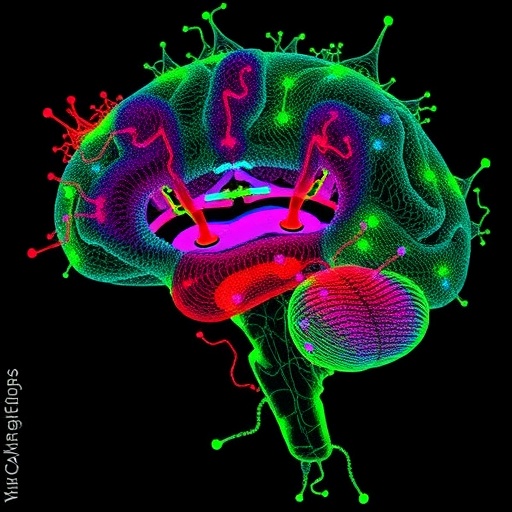PROTECT YOUR DNA WITH QUANTUM TECHNOLOGY
Orgo-Life the new way to the future Advertising by AdpathwayIn an increasingly complex healthcare environment, the support provided to caregivers often shapes the quality of care delivered to patients. The recent study conducted by Anker-Hansen and colleagues sheds new light on the often overlooked area of caregiver support, focusing specifically on the Carer Support Needs Assessment Tool Intervention (CSNAT-I). This tool aims to enhance the experiences of nurses and caregivers, revealing significant insights into their attitudes and practices regarding caregiving.
The research was aimed at evaluating the implementation and reception of the CSNAT-I among nursing and caregiving communities. As the health landscape evolves, there is mounting evidence that health professionals require not only extensive medical training but also supporting mechanisms that allow for constructive engagement with caregivers. The CSNAT-I has been structured to fulfill these evolving needs. This study, therefore, holds substantial relevance for both caregiving and nursing practices, aiming to bridge the gaps between caregivers’ requirements and health professionals’ responses.
During the study, participants reported their diverse experiences with the CSNAT-I, underlining the importance of understanding caregivers’ unique challenges and emotional struggles. The qualitative nature of the study allowed for rich narratives from the participants, highlighting personal anecdotes and professional experiences alike. These narratives emphasized how essential it is for healthcare systems to recognize and address the emotional burdens that caregivers frequently endure.
In the empirical phase of the study, numerous interviews were conducted, providing a comprehensive view of current practices and perspectives held by nurses and caregivers alike. Participants revealed their thoughts on how the CSNAT-I facilitates more open communication between caregivers and healthcare providers. Nurses noted that having a structured tool helped them identify the needs of caregivers more effectively, facilitating a smoother dialogue about the challenges caregivers face.
The feedback from participants also revealed some initial hesitance to adopt the CSNAT-I fully, with some nurses indicating a learning curve associated with its implementation. This barrier emphasizes the need for adequate training and easy access to resources that assist healthcare professionals in navigating new tools. Without these supportive measures, the potential of such interventions might not be fully realized, jeopardizing the quality of care that caregivers and patients ultimately receive.
As data from the study emerged, correlations began to surface, demonstrating how the CSNAT-I could transform caregiving practices. Most notably, nurses and caregivers reported improved relationships—one of the core objectives of the tool. With better communication platforms established via CSNAT-I, caregivers felt more valued and heard, a pivotal shift considering that a feeling of neglect can often lead to burnout and decreased quality of care.
Equally important was the trend indicating heightened awareness of caregivers’ emotional and psychological needs. The study illustrated that when healthcare professionals utilized the CSNAT-I, it provided them with a framework for discussing not just practical caregiving tasks, but also emotional support strategies. Such dual-faceted discussion encourages a holistic approach to caregiving, further amplifying the importance of the tool in healthcare settings.
In collecting data from multiple institutions, the study also drew attention to variations in how the CSNAT-I was implemented from one healthcare environment to another. This comparison highlighted the fluid nature of caregiver needs, which can vary based on institutional protocols, staff experience, and local demographics. While the core objectives of the CSNAT-I remained consistent, the pathways to its effective integration showcased diverse practices and adaptations unique to different healthcare landscapes.
Moreover, listening closely to the voices of nurses and caregivers revealed broader patterns that resonate with larger healthcare trends. As healthcare becomes more personalized, the increasing recognition of caregivers’ intrinsic value in the ecosystem serves as a fitting reminder of interconnectedness within care practices. Hence, this study reaffirms that caregivers are invaluable stakeholders in healthcare delivery, emphasizing that their needs must be prioritized for the system to function optimally.
As we look ahead, the potential impact of the CSNAT-I extends beyond the immediate confines of the study. Lessons learned from this intervention may pave the way for broader frameworks aimed at strengthening the caregiver-nurse dynamic across various healthcare settings. Sharing insights gathered from these experiences can contribute to policy changes that enhance caregiver protections and support systems across the board, optimizing patient care and staff well-being alike.
The ongoing discourse surrounding caregiver needs emphasizes an urgent call to action for healthcare systems everywhere. The challenges highlighted through the study point toward a need for comprehensive strategies that mitigate caregiver burnout, enhance communication, and elevate the overall structure of support within health settings. As systems evolve, integrating tools like the CSNAT-I into standard practices will ultimately serve to elevate the compassion and effectiveness of care delivered.
The overwhelming anecdotal evidence from this research suggests that caregiver feedback should be continually solicited as a standard in caregiver support protocols. Continuous improvement will be rooted in active listening and responsive adjustments to caregiving policies. This study serves as an important reminder that within the healthcare spectrum, everyone—including caregivers—deserves attention, understanding, and adequate support.
In conclusion, this research provides a wealth of evidence supporting the efficacy of interventions like the CSNAT-I. By placing emphasis not just on patient care but also on the people who provide this care, we can nurture an environment where both caregivers and patients thrive. As the results of the study proliferate through the healthcare community, it is hoped that attitudes and experiences will continue to evolve, ensuring a brighter, more engaged future for all involved in the caregiver experience.
Subject of Research: Caregiver support, Nursing practices, Healthcare interventions.
Article Title: Attitudes and experiences of nurses and carers with the carer support needs assessment tool intervention (CSNAT-I).
Article References:
Anker-Hansen, C., Østnes, SH., Torgersen, K. et al. Attitudes and experiences of nurses and carers with the carer support needs assessment tool intervention (CSNAT-I).
BMC Nurs 24, 1366 (2025). https://doi.org/10.1186/s12912-025-03960-7
Image Credits: AI Generated
DOI: https://doi.org/10.1186/s12912-025-03960-7
Keywords: Caregiver support, Nursing interventions, Communication in healthcare, Emotional support for caregivers, Healthcare quality.


 8 hours ago
4
8 hours ago
4





















 English (US) ·
English (US) ·  French (CA) ·
French (CA) ·